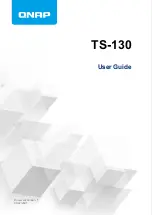
587
Configuring QoS
Understanding QoS
action to be taken when the packet conforms to or exceeds the specified traffic rates. Conform, exceed, and violate
actions are to drop the packet, to send the packet without modifications, to set a new CoS, DSCP, or IP precedence value,
or to set a QoS group value for classification at the egress.
Note:
If the conform action is set to drop, the exceed and violate actions are automatically set to drop. If the exceed
action is set to drop, the violate action is automatically set to drop.
You can configure each marking conform, exceed, or violate action by using explicit values, using table maps, or using
a combination of both. If you do not configure a
violate-action
, by default the violate class is assigned the same action
as the
exceed-action.
Table maps list specific traffic attributes and map (or convert) them to other attributes. Table maps are not supported for
violate-action
for aggregate policing unless you configure a table map for exceed-action and no explicit action is
configured for violate action.
After you create a table map, you configure a policy-map policer to use the table map.
Note:
When you use a table map in an input policy map, the protocol type for the
from
–action in the table map must be
the same as the protocol type of the associated classification. For example, if a class map represents IP classification,
the
from
–type action in the table map must be either
dscp
or
precedence
. If the class map represents a non-IP
classification, the
from
–type action in the table map must be
cos
.
You can configure multiple conform and exceed actions conform, exceed, and violate actions simultaneously for an
aggregate policer as parameters in the
policer aggregate
global configuration command, but you must enter the actions
in a particular order. See the configuration guideline in
Configuring Input Policy Maps with Aggregate Policing, page 617
After you configure the aggregate policer, you create a policy map and an associated class map, associate the policy
map with the aggregate policer, and apply the service policy to a port.
Note:
Only one policy map can use any specific aggregate policer. Aggregate policing cannot be used to aggregate
traffic streams across multiple interfaces. It can be used only to aggregate traffic streams across multiple classes in a
policy map attached to an interface and aggregate streams across VLANs on a port in a per-port, per-VLAN policy map.
After you configure the policy map and policing actions, attach the policy to an ingress port by using the
service-policy
interface configuration command.
The class maps in this example refer to access lists.
Switch(config)#
policer aggregate agg1 cir 23000 bc 10000 conform-action set-dscp-transmit 46
exceed-action drop
Switch(config)#
class-map testclass
Switch(config-cmap)#
match access-group 1
Switch(config-cmap)#
exit
Switch(config)#
class-map videoclass
Switch(config-cmap)#
match access-group 2
Switch(config-cmap)#
exit
Switch(config)#
policy-map testexample
Switch(config-pmap)#
class testclass
Switch(config-pmap-c)#
police aggregate agg1
Switch(config-pmap-c)#
exit
Switch(config-pmap)#
class video-class
Switch(config-pmap-c)#
police aggregate agg1
Switch(config-pmap-c)#
exit
Switch(config-pmap)#
exit
Switch(config)#
interface fastethernet0/1
Switch(config-if)#
service-policy input testexample
Switch(config-if)#
exit
For configuration information, see
Configuring Input Policy Maps with Aggregate Policing, page 617
.
You can also use aggregate policing to regulate traffic streams across VLANs, as in this example:
Summary of Contents for IE 4000
Page 12: ...8 Configuration Overview Default Settings After Initial Switch Configuration ...
Page 52: ...48 Configuring Interfaces Monitoring and Maintaining the Interfaces ...
Page 108: ...104 Configuring Switch Clusters Additional References ...
Page 128: ...124 Performing Switch Administration Additional References ...
Page 130: ...126 Configuring PTP ...
Page 140: ...136 Configuring CIP Additional References ...
Page 146: ...142 Configuring SDM Templates Configuration Examples for Configuring SDM Templates ...
Page 192: ...188 Configuring Switch Based Authentication Additional References ...
Page 244: ...240 Configuring IEEE 802 1x Port Based Authentication Additional References ...
Page 298: ...294 Configuring VLANs Additional References ...
Page 336: ...332 Configuring STP Additional References ...
Page 408: ...404 Configuring DHCP Additional References ...
Page 450: ...446 Configuring IGMP Snooping and MVR Additional References ...
Page 490: ...486 Configuring SPAN and RSPAN Additional References ...
Page 502: ...498 Configuring Layer 2 NAT ...
Page 770: ...766 Configuring IPv6 MLD Snooping Related Documents ...
Page 930: ...926 Configuring IP Unicast Routing Related Documents ...
Page 976: ...972 Configuring Cisco IOS IP SLAs Operations Additional References ...
Page 978: ...974 Dying Gasp ...
Page 990: ...986 Configuring Enhanced Object Tracking Monitoring Enhanced Object Tracking ...
Page 994: ...990 Configuring MODBUS TCP Displaying MODBUS TCP Information ...
Page 996: ...992 Ethernet CFM ...
Page 1066: ...1062 Using an SD Card SD Card Alarms ...
















































